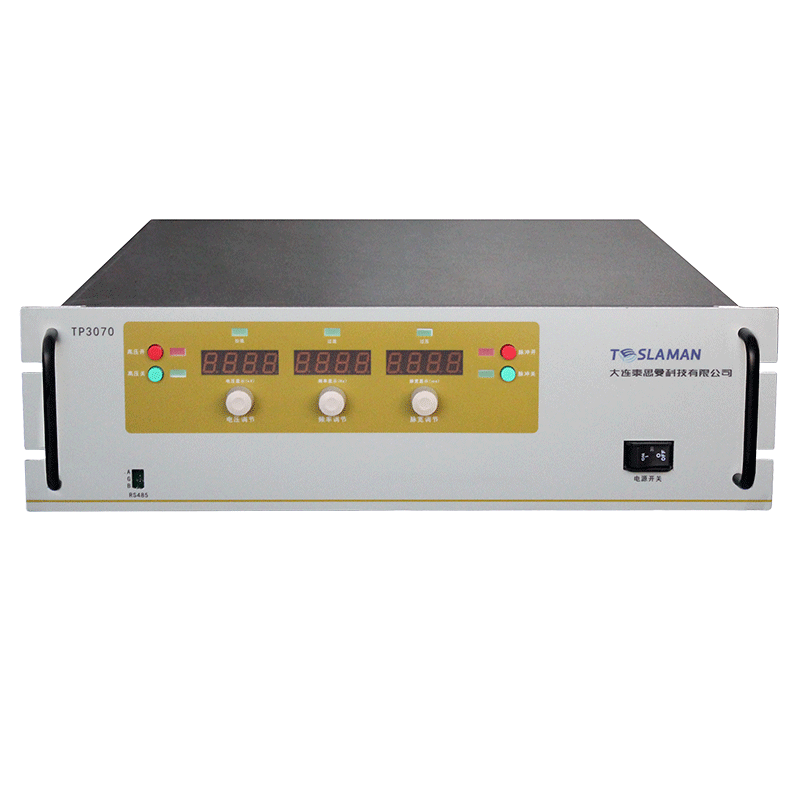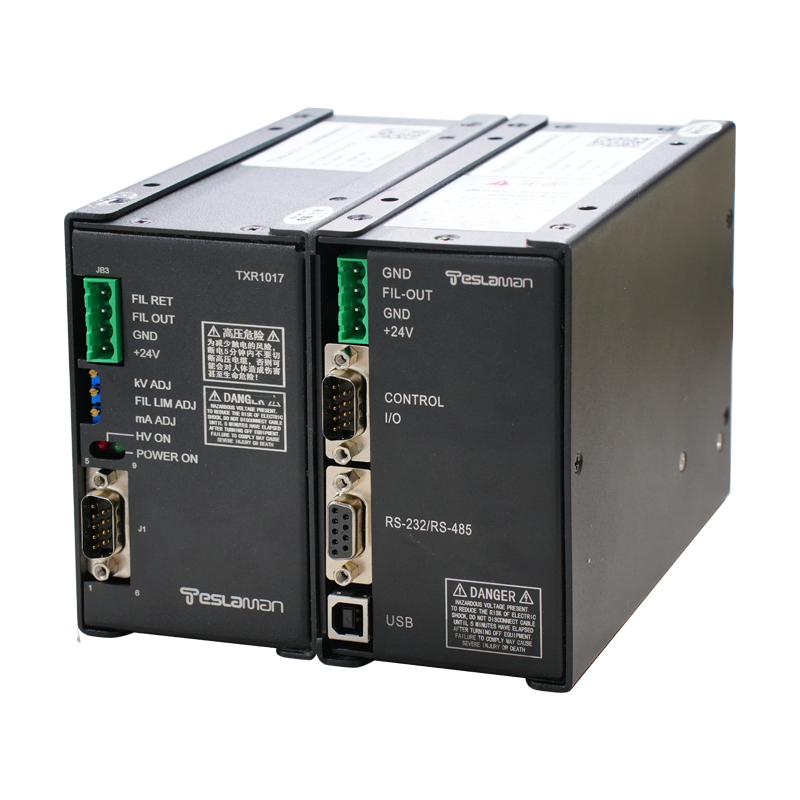Application Technology of High-Frequency High-Voltage Power Supplies in Nuclear Magnetic Resonance
In the fields of modern medical imaging and cutting-edge scientific research, nuclear magnetic resonance (NMR) technology has become a core tool for analyzing the microstructures and dynamic processes of matter, relying on its non-ionizing radiation, high soft tissue resolution, and multi-dimensional imaging capabilities. As a key supporting technology for NMR systems, high-frequency high-voltage power supplies play an irreplaceable role in enhancing magnetic field stability, optimizing radiofrequency (RF) excitation efficiency, and expanding imaging sequence compatibility through precise regulation of electromagnetic field parameters. Technological advancements in these power supplies directly drive the breakthroughs of NMR equipment toward ultra-high field strength, ultra-fast imaging, and ultra-micro resolution.
1. Magnetic Field Stability Control Technology of High-Frequency High-Voltage Power Supplies
NMR systems have extremely high requirements for the uniformity of the static magnetic field (typically on the order of 10⁻⁹), and high-frequency high-voltage power supplies achieve dynamic magnetic field calibration through active magnetic compensation technology. Based on a phase-locked loop (PLL) feedback mechanism, the power supply can real-time monitor the flux fluctuations of superconducting magnets and generate counter magnetic fields by driving compensation coils with nanosecond-level pulsed high voltages (typical voltage range: 5-20kV). This closed-loop control system effectively suppresses magnetic field drifts caused by environmental temperature changes, mechanical vibrations, and other factors, improving the magnetic field stability of 1.5T imaging systems to ±0.1ppm/h, meeting the requirements of magnetic field-sensitive sequences such as diffusion-weighted imaging (DWI).
In scenarios involving rapid switching of gradient magnetic fields, the dynamic response capability of high-frequency high-voltage power supplies is critical. When gradient coils switch millitesla-level magnetic field gradients, the power supply must provide hundred-ampere-level pulsed currents within microseconds while maintaining voltage ripple below 0.1%. By adopting multi-level inverter topologies and silicon carbide (SiC) power devices, the switching frequency of the power supply can exceed 100kHz, effectively reducing eddy current losses and increasing the slew rate of gradient magnetic fields from 200T/m/s for traditional power supplies to 500T/m/s. This significantly shortens the echo time (TE) of imaging sequences, laying the hardware foundation for ultra-fast imaging technologies (such as EPI sequences).
2. Power Supply Collaborative Optimization for RF Excitation Modules
The precise generation of RF pulses is a core component of NMR signal excitation, and high-frequency high-voltage power supplies achieve waveform optimization through deep collaboration with RF amplifiers. In phased-array RF transmission systems, the power supply must provide stable 200-400V DC high voltage for each channel's power amplifier while dynamically adjusting the bias voltage through digital predistortion (DPD) algorithms to suppress amplifier nonlinear distortion (IMD) below -60dB. This collaborative control technology ensures that the amplitude consistency error of an 8-channel RF transmission system is less than 1%, and the phase deviation is controlled within ±1°, significantly improving the uniformity of signal-to-noise ratio in whole-body imaging.
For the special requirements of ultra-high-frequency NMR (such as field strengths above 7T), high-frequency high-voltage power supplies have developed broadband power modulation technologies. By extending the switching frequency to the 10MHz range and introducing direct digital synthesis (DDS) technology, the power supply can generate composite high-voltage pulses containing multi-band components (such as simultaneously covering the resonance frequencies of ¹H and ¹³C nuclei). Experimental data show that this technology can reduce the sequence switching time for multinuclear imaging from minutes to seconds, enabling simultaneous acquisition of multi-nuclear signals in metabolomics research and increasing data acquisition efficiency by 3-5 times.
3. System Energy Efficiency Management and Electromagnetic Compatibility Design
The energy efficiency optimization of high-frequency high-voltage power supplies is crucial for the long-term stable operation of NMR equipment. By adopting soft switching technologies (such as zero-voltage switching ZVS topologies), the energy conversion efficiency of power supplies can be increased from 85% for traditional hard switching modes to over 95%. Combined with liquid cooling systems, this reduces the standby power consumption of 30kW-class power supplies to below 1.5kW. During the excitation process of superconducting magnets, the power supply's ramp-up control technology can reduce the excitation time from 24 hours in traditional constant current mode to 8 hours, while dynamically adjusting the ripple frequency (to avoid mechanical resonance frequencies) to control vibration noise below 50dB, meeting the silent design requirements for magnet rooms.
Electromagnetic compatibility (EMC) design is one of the core challenges in the application of high-frequency high-voltage power supplies. By integrating multi-layer LC filter networks (with cutoff frequencies as low as 10kHz) at the input and output ends of the power supply and using Faraday cage structures to electromagnetically shield power devices, the interference noise of the power supply on NMR signals can be suppressed below 1nV. In 7T systems, this design maintains the line width (FWHM) of proton spectra within 0.1Hz, ensuring the accuracy of high-resolution spectral analysis.
4. Future Technological Evolution Directions
With the development of solid-state RF devices and intelligent control algorithms, high-frequency high-voltage power supplies are undergoing breakthroughs toward integration and intelligence. RF power supply modules based on gallium nitride (GaN) devices can reduce the volume to one-third of traditional designs. Combined with distributed control systems (DCS), they enable nanosecond-level synchronous triggering of multi-channel power supplies. The introduction of artificial intelligence algorithms (such as deep learning-based magnetic field prediction models) will further enhance the power supply's adaptive capabilities, improving magnetic field stability by another order of magnitude (to ±0.01ppm/h), supporting sub-micron-level microscopy (such as NMR microscopy).
In the frontier field of quantum computing and NMR integration, high-frequency high-voltage power supplies are exploring new applications in quantum state regulation. By generating femtosecond-level high-voltage pulse sequences, they can precisely control the quantum superposition and entanglement states of nuclear spins, driving NMR technology's transition from traditional imaging to quantum information processing platforms. This innovation will provide a new experimental paradigm for algorithm verification and physical implementation in quantum computing.




















